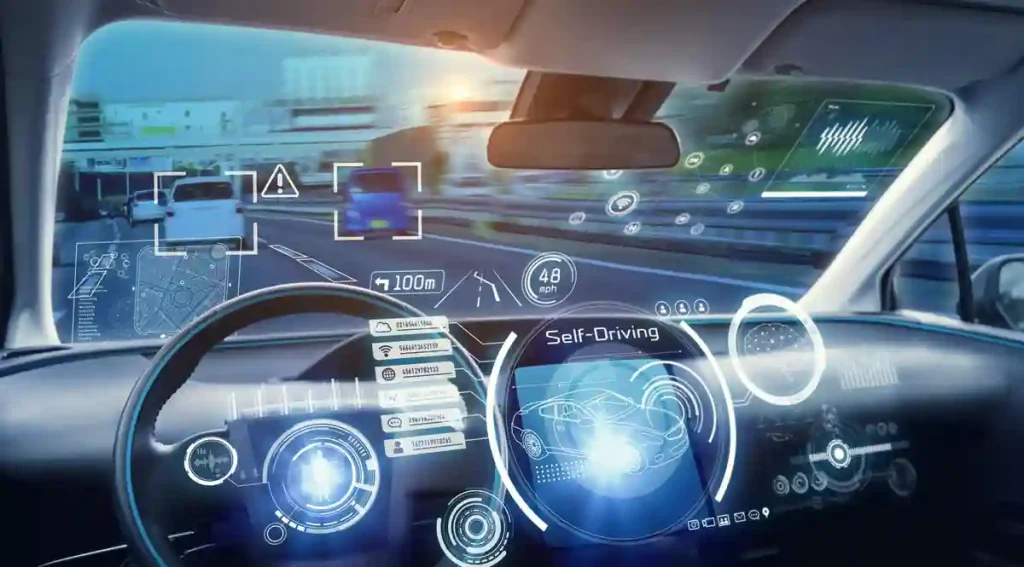
Machine learning self driving cars are transforming transportation by reducing human error and enabling vehicles to perceive, interpret, and react to their environment autonomously. Around 94% of serious road accidents are caused by human mistakes, highlighting the potential life-saving impact of autonomous AI-driven vehicles. At the heart of this technology lies precise, high-quality data annotation, which converts raw sensor inputs into structured, usable datasets for machine learning algorithms. Without accurate annotation, even the most advanced AI systems cannot reliably detect objects, predict movement, or respond safely to complex traffic scenarios.
Self-driving vehicles process enormous volumes of data from cameras, LiDAR, radar, and ultrasonic sensors. Each sensor produces detailed information about road conditions, obstacles, other vehicles, and pedestrians. To train models that can safely navigate this environment, all sensor outputs must be meticulously labeled. This includes identifying moving and stationary objects, classifying road signs, segmenting lanes, and labeling behavioral cues such as pedestrian movement or vehicle intent. Professional data annotation ensures that this machine learning pipeline is built on clean, reliable, and actionable data, which is essential for the safety and functionality of autonomous cars.
Self-driving cars rely on a multi-sensor system to perceive the world:
Cameras: Capture high-resolution images for lane detection, traffic lights, pedestrians, and other vehicles.
Radar: Measures speed and distance of moving objects, particularly effective in low-visibility conditions.
LiDAR (Light Detection and Ranging): Generates 3D point clouds to accurately map surrounding objects and terrain.
Ultrasonic Sensors: Detect close obstacles during parking or low-speed maneuvers.
These sensors generate massive volumes of raw data every hour. For a single autonomous vehicle, hundreds of gigabytes of sensor data can be produced daily. Professional data annotation ensures this data is structured and labeled correctly for machine learning algorithms to process effectively.
Modern autonomous vehicles rely on a steady stream of data—from cameras, radar, lidar, and inertial sensors—to perceive their environment. Industry figures show that around 94% of serious road crashes are caused by human error. By contrast, a car powered by machine learning can continually learn and adapt to conditions humans often misjudge. In this context, the work of data annotation, sensor fusion, and algorithm training becomes the hidden engine of the vehicle’s intelligence.
A self‑driving car uses multiple types of sensors to build a 3D, dynamic view of its surroundings:
Cameras deliver high‑resolution images across angles, providing color and texture information.
Radar emits radio waves to detect objects, especially useful in low‑visibility conditions.
LiDAR (Light Detection and Ranging) generates 3D point clouds, giving precise shape and depth information for objects, vehicles, and obstacles.
Together, these sensors generate terabytes of data every day—data that must be ingested, annotated, and fed into machine‑learning models. Without accurate annotation of objects, lanes, signs and moving obstacles, the vehicle’s “understanding” is flawed, which may compromise safety and reliability.
In the automotive context, machine learning algorithms perform tasks such as object detection, classification and decision‑making. Methods like SIFT (Scale‑Invariant Feature Transform) assist in feature extraction, TextonBoost and AdaBoost support object recognition and classification, and YOLO (“You Only Look Once”) enables real‑time object detection by identifying and grouping objects like pedestrians, vehicles, trees and road signs. These algorithms depend on clean, labelled data to learn from. A mislabelled object in the dataset may lead the vehicle to misclassify a pedestrian or overlook a road hazard.
High‑stakes fields such as autonomous driving cannot tolerate annotation errors. That is why professional providers like Mindy Support specialise in automotive annotation workflows. For example:
The annotation of 100,000 unique videos was required for a driver‑state monitoring system (tracking eye movements, drowsiness, substance influence) that Mindy Support supported.
Automotive data annotation commonly includes 3D point‑cloud annotation, full scene segmentation (identifying all relevant objects in a scene), and video labelling across multiple frames.
In each case, the accuracy and consistency of annotated data directly influence how well the vehicle will perform in real‑world, unpredictable conditions.
When annotated datasets are robust, machine‑learning models can be trained with supervised learning methods—data with labels is essential. In automotive AI, supervised learning is typically chosen because the stakes are high: the algorithm must know what it is looking at and what action to take. For example, labelled pedestrian images enable the model to classify “person crossing the street” vs “stationary object on side”. Once these models are trained, the vehicle can interpret sensor input and make decisions: “Should I brake? Should I change lanes? Should I alert the driver?” The quality of data annotation underpins every step.
Deploying self‑driving cars is not just a technological challenge—it’s a strategic one. With advanced machine learning systems, companies can:
Achieve higher safety standards by reducing human error.
Adapt faster to new markets because sensors and models can learn from diverse annotated datasets.
Scale operations when annotation, training and validation are outsourced to experts.
Mindy Support enables companies to focus on innovation and deployment, while ensuring that the annotated data feeding their machine‑learning models meets strict accuracy, scale and compliance requirements.
In the automotive world, machine learning makes self‑driving cars reality by interpreting what sensors observe, classifying those observations correctly and deciding appropriate actions. But the unseen hero behind this process is annotation of data—precise, large‑scale, high‑quality annotation that enables models to learn safely and reliably.
Choosing a partner experienced in automotive annotation ensures that your machine‑learning systems are built on clean, representative datasets, enabling you to deploy autonomous vehicles that perform confidently in changing real‑world conditions.